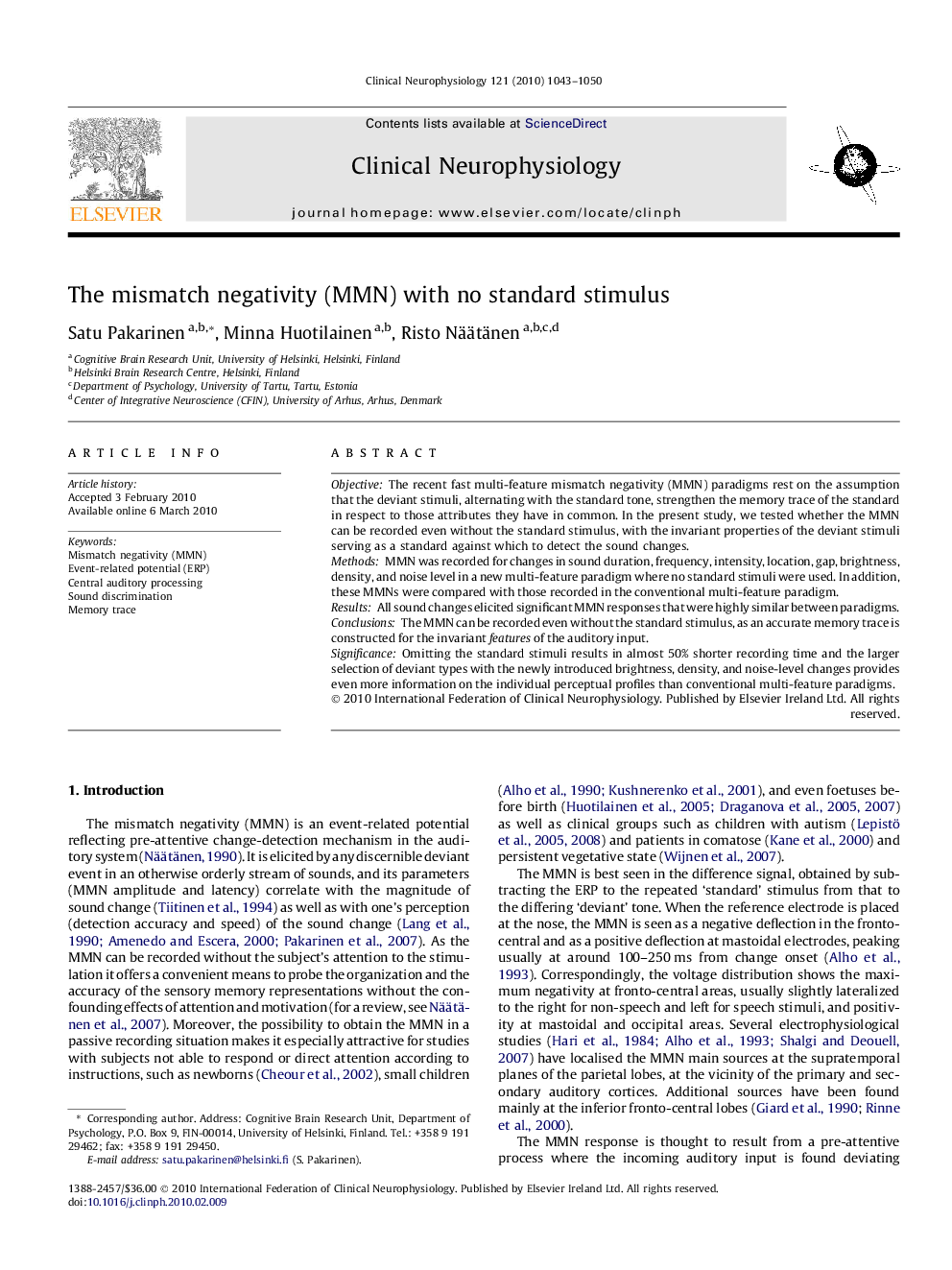| Article ID | Journal | Published Year | Pages | File Type |
|---|---|---|---|---|
| 3045927 | Clinical Neurophysiology | 2010 | 8 Pages |
ObjectiveThe recent fast multi-feature mismatch negativity (MMN) paradigms rest on the assumption that the deviant stimuli, alternating with the standard tone, strengthen the memory trace of the standard in respect to those attributes they have in common. In the present study, we tested whether the MMN can be recorded even without the standard stimulus, with the invariant properties of the deviant stimuli serving as a standard against which to detect the sound changes.MethodsMMN was recorded for changes in sound duration, frequency, intensity, location, gap, brightness, density, and noise level in a new multi-feature paradigm where no standard stimuli were used. In addition, these MMNs were compared with those recorded in the conventional multi-feature paradigm.ResultsAll sound changes elicited significant MMN responses that were highly similar between paradigms.ConclusionsThe MMN can be recorded even without the standard stimulus, as an accurate memory trace is constructed for the invariant features of the auditory input.SignificanceOmitting the standard stimuli results in almost 50% shorter recording time and the larger selection of deviant types with the newly introduced brightness, density, and noise-level changes provides even more information on the individual perceptual profiles than conventional multi-feature paradigms.
